Back in 2018, Jelmer Boskma explained the work of Scanline VFX for Ant-Man and The Wasp. Today he’s back for another Marvel Studios adventure.
How did you and Scanline VFX get involved on this show?
Scanline has been involved with a fair number of Marvel projects at this point and had just completed work on Ant-Man & The Wasp with Stef (Ceretti, production VFX supervisor) and Susan (Pickett, production VFX producer) a year prior. They approached us pretty early on and shared some of the ambitious ideas the script called for to see if we were interested in getting on board. Which we obviously were!
How was the collaboration with Director Chloé Zhao and Overall VFX Supervisor Stephane Ceretti?
Rewarding is the word that comes to mind. Doing a second film back-to-back with Stef proved to be a wonderful experience for me. I felt there was a constant openness to ideas and received a great sense of trust in our ability to deliver the visuals Chloé was after. Chloé seemed just as excited to be part of this massive project as we were. Her filmmaking style proved to be completely authentic and creatively challenging at times, but it was this same authenticity as well as her commitment to excellence that eventually led to the refreshingly original visuals in the film.
What were their expectations and approach about the visual effects?
Photorealism in service of a naturalistic, handheld, location-based shooting style akin to Chloé’s previous films and style of filmmaking. We focused on clarity, color, and attempted to avoid VFX tropes such as relying on excessive atmospheric perspective to communicate depth. Everything was done with the legendary Jack Kirby in the back of our minds.
How did you organize the work with your VFX Producer?
VFX Producer Marcus Goodwin worked out the initial schedule, was the gatekeeper of all production-related business and ensured we had the right amount of support within the facility to get the work done within budget and on schedule. Associate VFX Producer Zach Mallett dealt with much of the day-to-day operations in North America, while VFX Producer Julia Smola kept the European teams on track. It’s incredible what these three and their respective teams have pulled off to get this film delivered amidst a global pandemic.
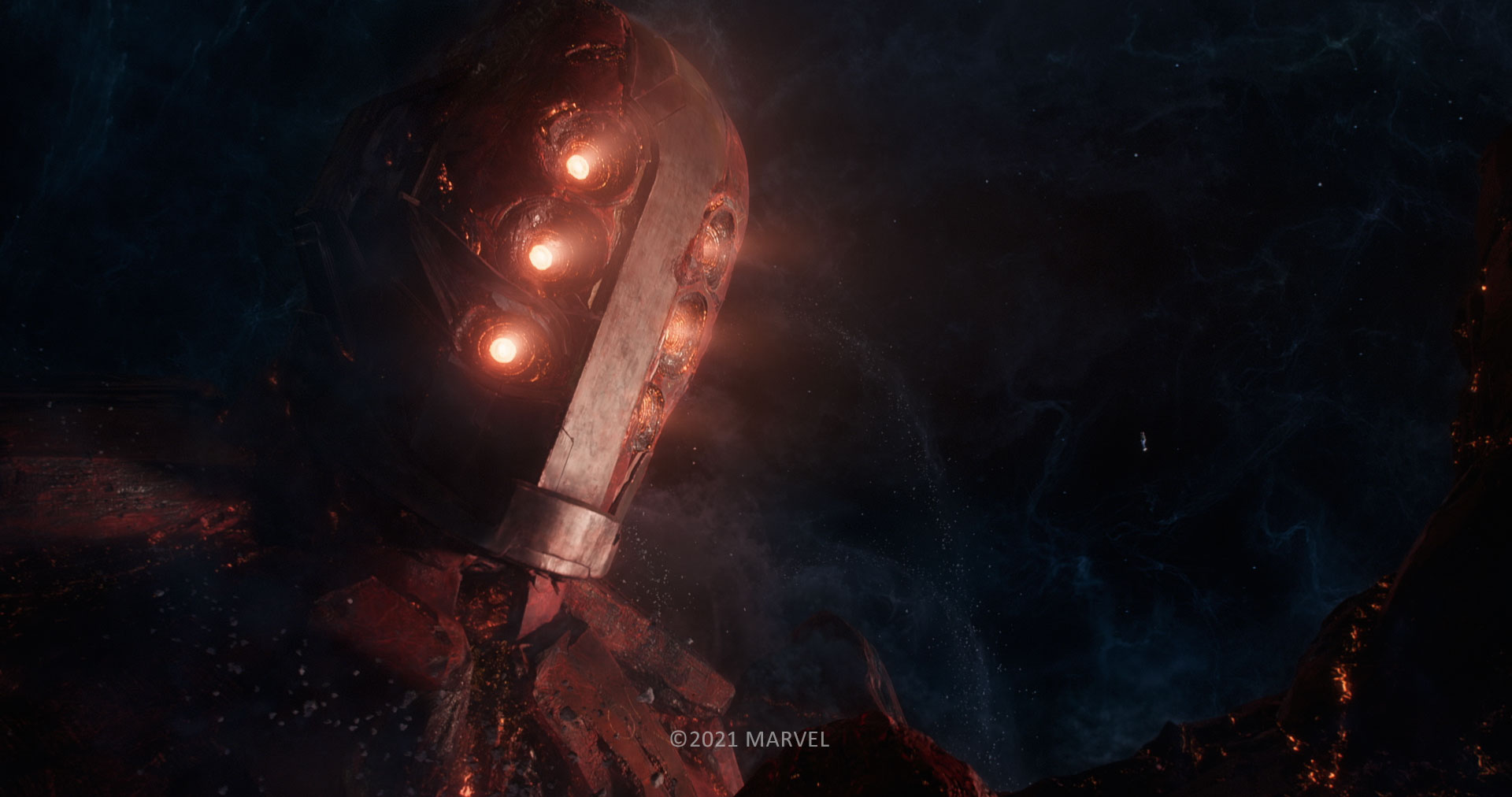
How was the work split amongst the Scanline VFX offices?
Eternals was the first project for Scanline’s new London facility, which is where Marcus and I worked. Eternals became a global operation for us with involvement from all of our locations. At one point we had artists working out of our Munich office, as well as Stuttgart, Seoul, Montreal, Vancouver and Los Angeles. With myself and Marcus working out of London, we had to make sure we had additional leadership in place to help us get it all done efficiently. Additional VFX Supervisors Adriano Rinaldi and Roland Langschwert lent their expertise to help oversee the work done in our North American and German offices, respectively.
What are the sequences made by Scanline VFX?
We handled most of the cosmic work on the show. Close up shots of the sun and Earth, Ajak and Sersi’s meetings with Arishem, Ikaris leaving Earth, Arishem’s Galactic (The Big Bang) montage and The World Forge. We also worked on the final scene where we see Arishem returning to Earth, taking the remaining Eternals with him. We did the Camden fight sequence and the South Dakota moment where Sersi kneels by Ajak’s body, followed by her first encounter with Arishem. Initially we also worked on larger sequences for both Centurii six, as well as ancient India, sadly neither of which made it into the final cut of the film.
Can you elaborates about the design and creation of the Deviant Kro?
All Deviants in the film share a very similar design language. Initially, the Deviants had slightly more individual color schemes, which became more unified along the way. Early on in the project, we worked on translating concept designs from Marvel’s viz-dev team for the Tiger Deviant and Void Deviant in tandem with ILM, who took care of the build of the majority of Deviants, including Kro. We received the finished model from them, inherited into our own pipeline, and rigged it up for the animation needs of the Camden fight sequence.
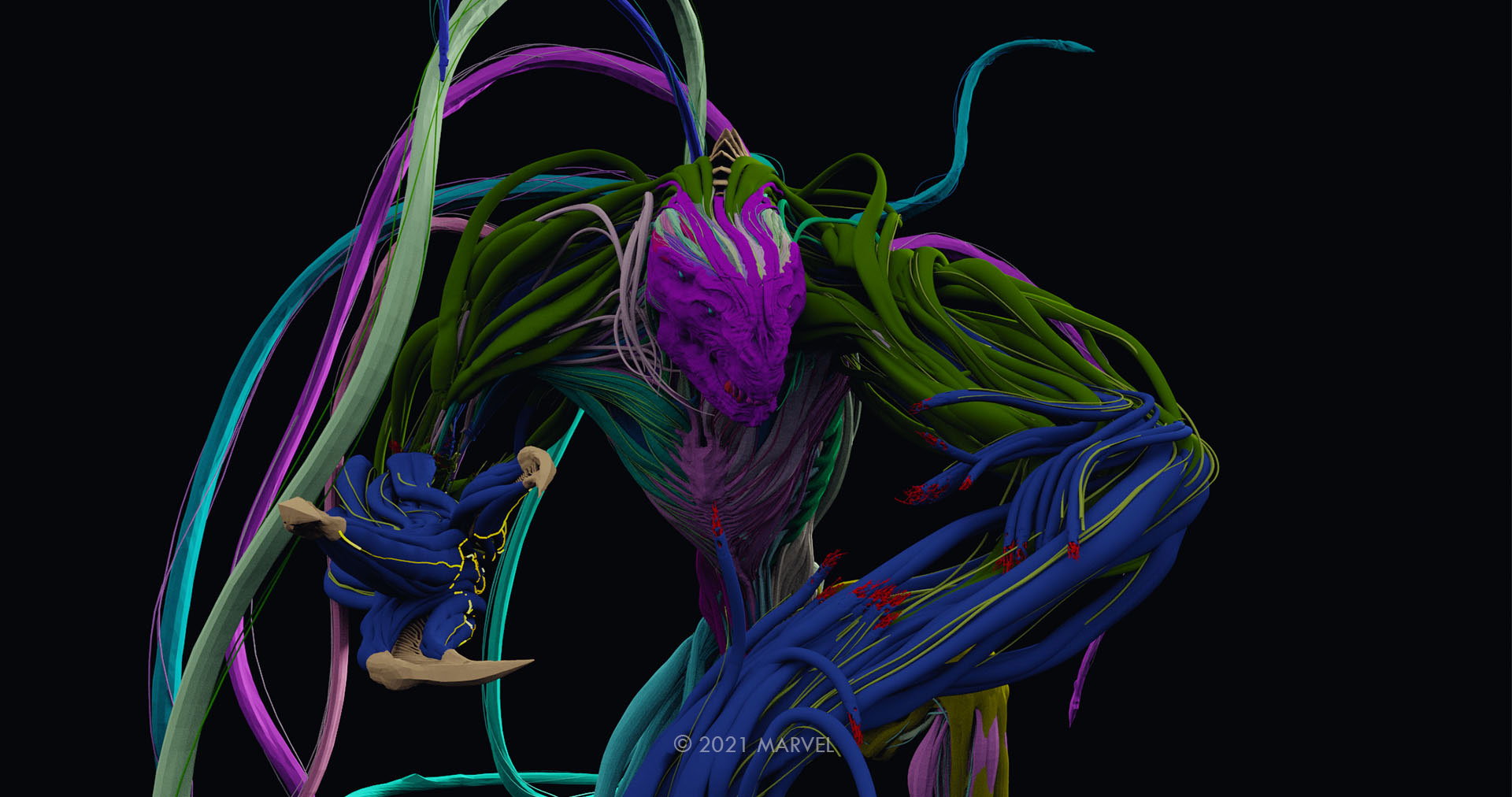
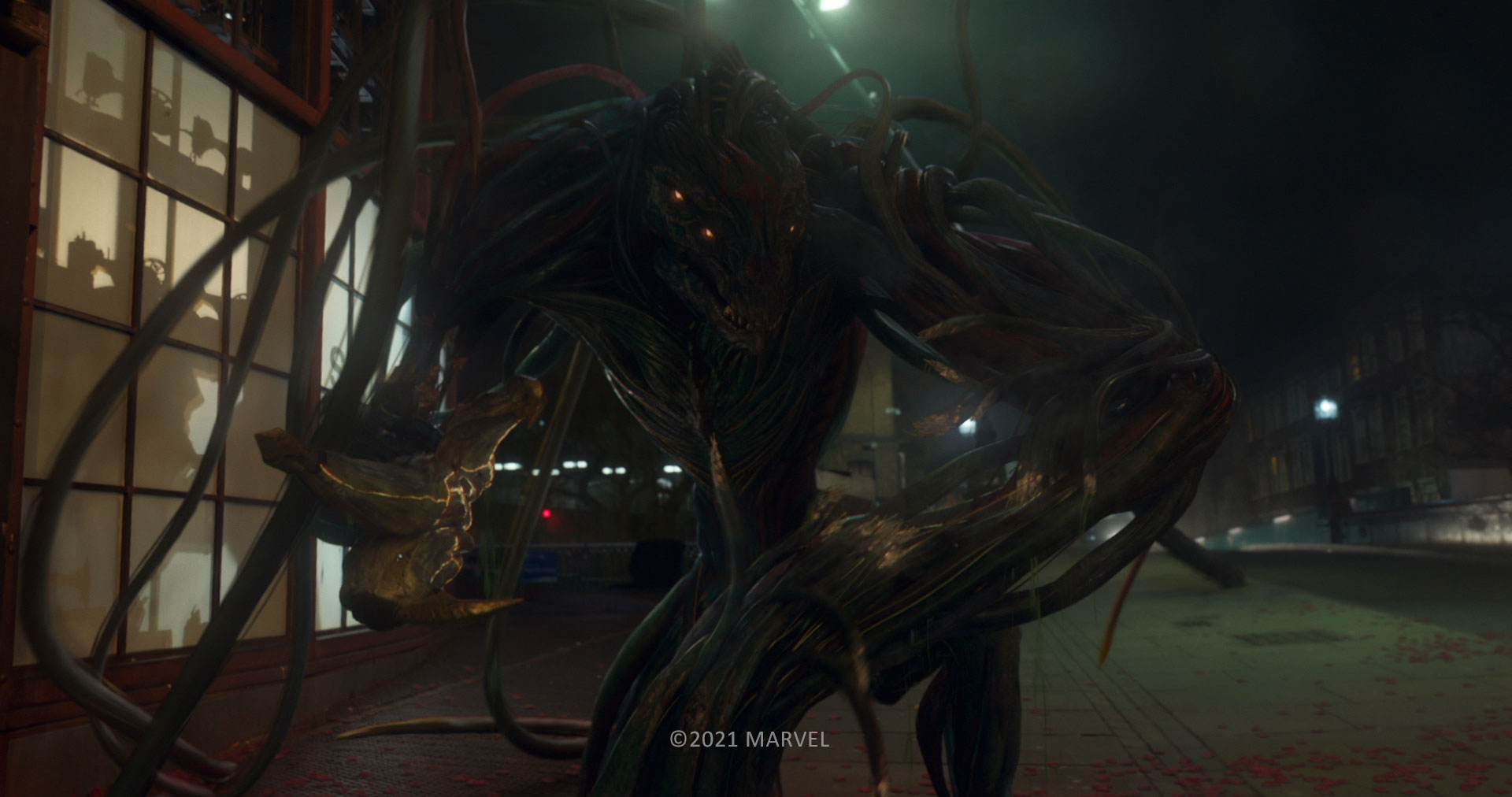
How was simulated his presence on set?
For the majority of shots with Kro we had a stunt performer using arm appendixes providing Gemma (Chan) and Lia (McHugh) someone for their characters to work off of.
Can you tell us more about his first appearance in the canal?
It’s the first time we are introduced to the leader of the Deviants and Chloé wanted to be sure he came across as threatening and intimidating. The lighting and mood of the scene set by cinematographer Ben Davis helped enormously with achieving this. We replaced parts of the water lock so Kro’ could affect the gates and railings with his weight. Cascading water was simulated coming off of his body as he was rising from the canal including smaller streams and droplets dripping from his back tentacles.
What was the main challenges with Kro animations?
Besides the fact that Kro’s physique is comprised of many individually animated tentacles, the main challenge was finding the right balance between his weight and agility. Too slow and heavy caused him to not be enough of a threat to our heroes. Whereas same was true when Kro was too quick and agile. Finding the right balance and instilling a sense of threatening unpredictability was the main challenge and also what made Kro somewhat unique as a character. Thankfully I had a phenomenal right hand in the form of Animation Supervisor Tom Goodenough, who masterfully guided his team of animators through the web of keyframe pitfalls.
How did you recreated the Camden environment?
For a handful of shots, we replaced a building that had a distracting presence as it was under construction at the time of filming, but for most shots, it was the actual location. We did end up replacing portions of certain walls and streets to allow for more interaction between Kro and his surroundings. We only had one moment where we needed a fully digital replica of the Camden environment. This was for an over the shoulder shot inside the bus, seeing Ikaris and Kro tumbling and eventually crashing into the bus. For that, we utilized lidar data and photo reference captured at the time of shooting to recreate what we needed and relit it to simulate the light of the bus illuminating the street.
The Eternals are using their powers. Can you elaborates about them?
We had seen the fighting skills and powers of some of the other Eternals in the Mesopotamia fight in the opening sequence of the movie but had not seen Sprite’s and Seri’s abilities at full force yet. It’s the Camden fight scene where we witness some of the firepower they bring to the team. Early on we had worked on a handful of test shots to help figure out the look of Makkari’s super-speed effect and as we were working on Sprite’s illusion and Seri’s transmutation powers, ILM and Weta focused on developing the powers of Gilgamesh, Ikaris and Kingo. Ultimately I think we ended up inheriting a bit of everyone’s collective efforts, to arrive at a consistent language for the powers of the Eternals.
Can you tell us more about the London double decker bus transformation?
That was a fun original idea to execute. Stef and the previs team had already blocked out the broad strokes and beats of that moment. We simply tried to make it look as believable as possible. The bus you see at that moment is fully digital, although based on scan data of a real bus and driven by a real London bus driver! All of the rose petals were dynamically simulated, lit and rendered using real-world physics. The lion’s share of that work was driven by CG supervisor Brian Goodwin and our FX team, who handed off arrays of passes to our compositing team led by Brent Prevatt. Lidar scan data of the set helped us to integrate these CG flower petals accurately into the shots through our deep compositing pipeline. I think it’s safe to say that Scanline is known for its large scale natural simulation work and has done quite a bit of it over the years. Tsunamis, Earthquakes, Alien invasions, Volcanic eruptions have all been tackled before by our teams. Simulating hundreds of thousands of flower petals, however, was a first for us.
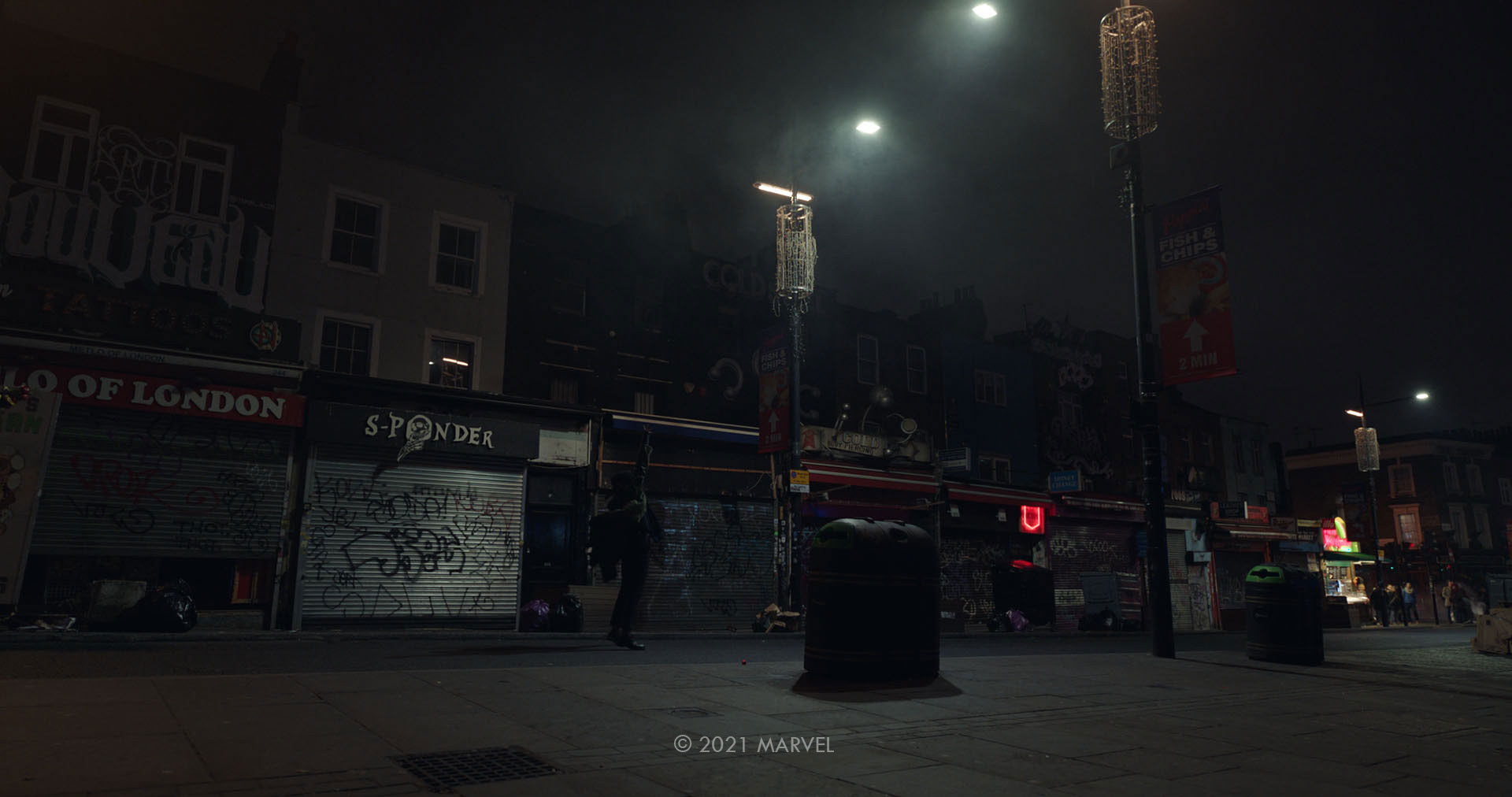
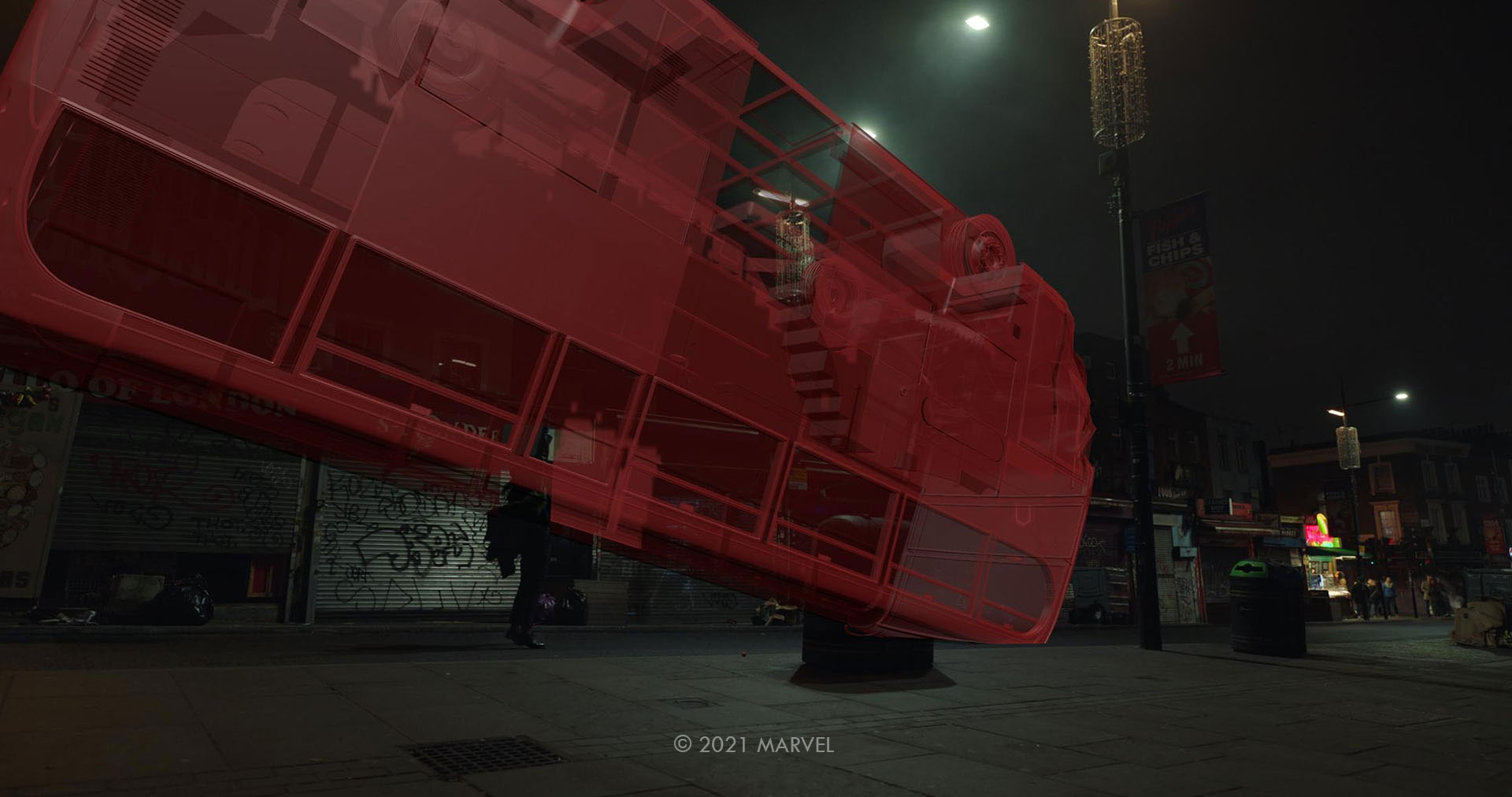
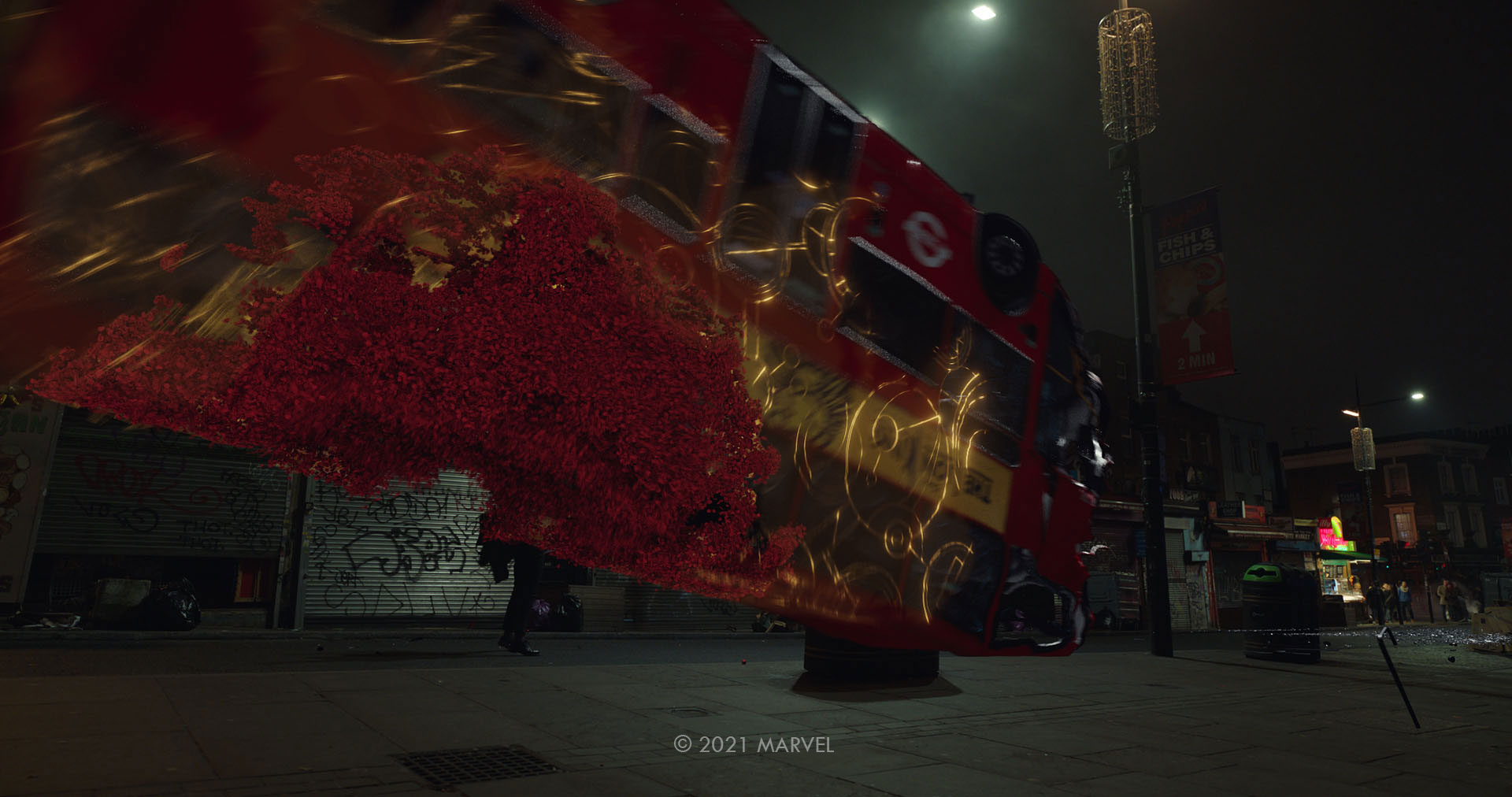
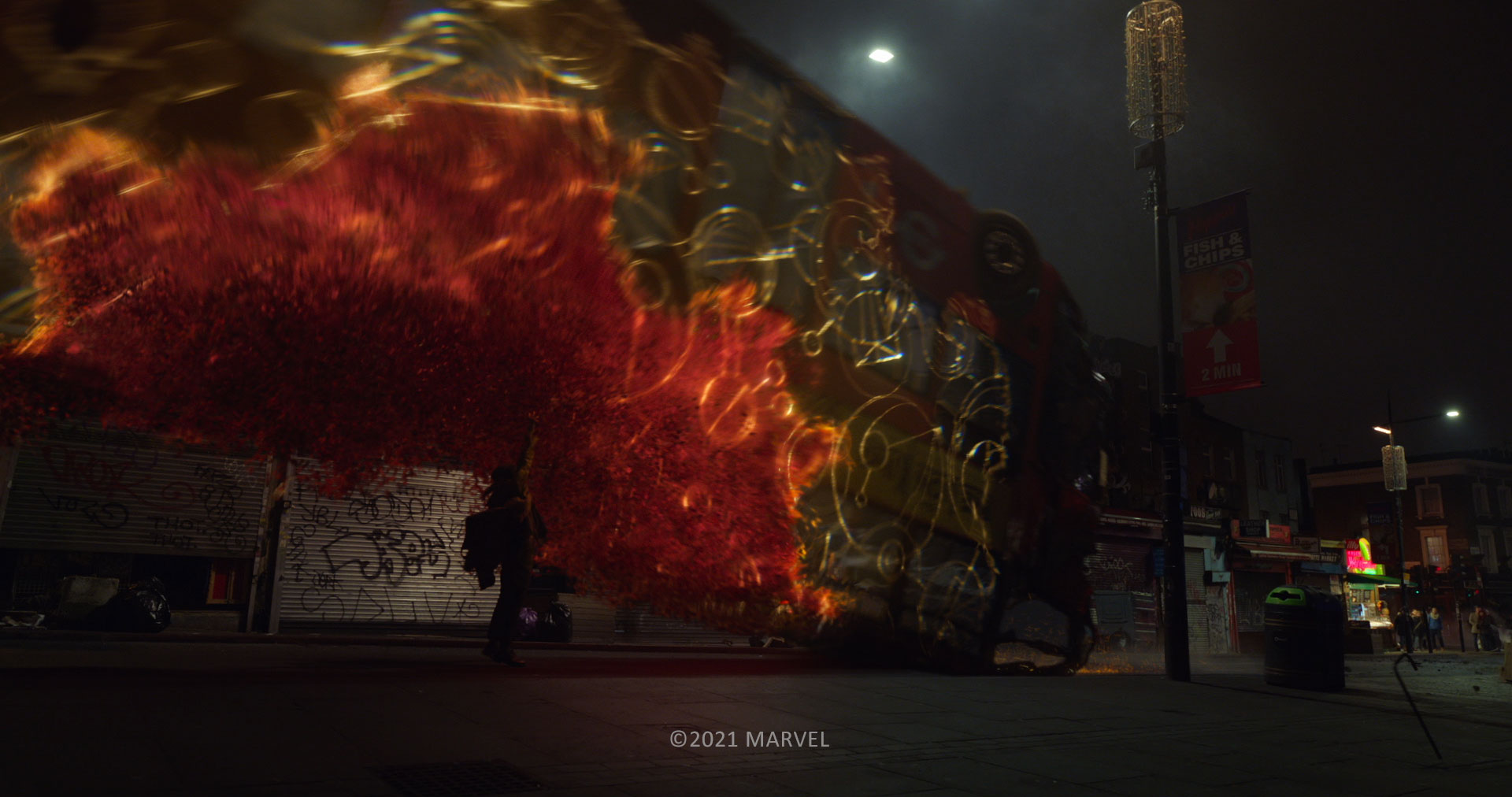
How did you manage the various copies of Sersi and Sprite?
That was a clever combination of motion control passes and digital doubles. We provided our camera track data to Additional VFX Supervisor Mårten Larsson, who oversaw the motion control shoot. We were sent back multiple elements where the lighting was matched as closely as possible to the lighting on the day of the Camden shoot. Once placed in the shot, all these additional photographed characters were rotomated so that we could render proper cast shadows from them back onto the location plate as well as on all the other characters on screen, real or CG. For characters in the mid and background, we ended up relying on digi doubles. All of them received a full pass of cloth simulation to realistically mimic the behavior of the flowing coats and scarfs part of Sersi and Sprite’s costumes.
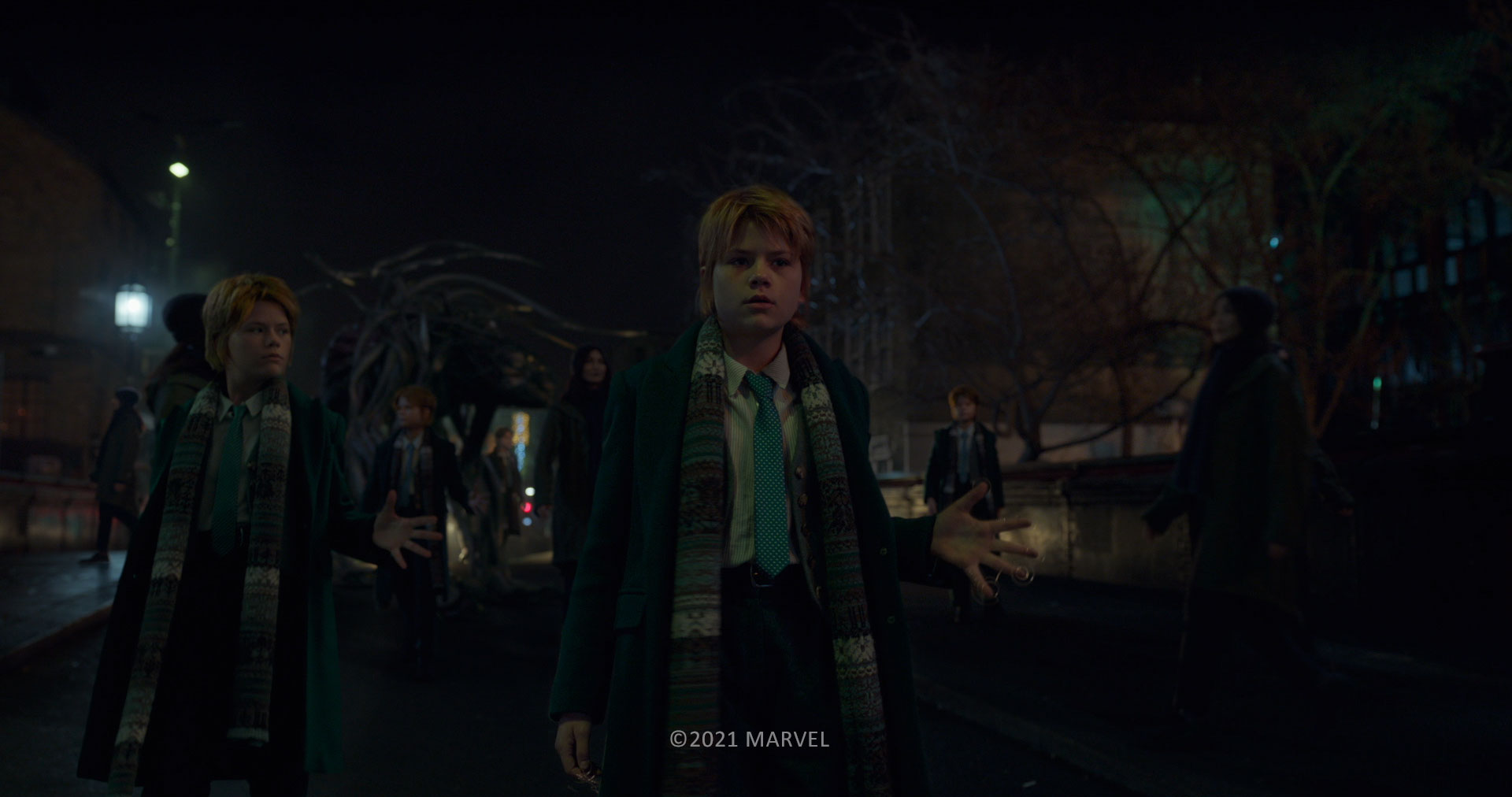
Can you elaborates about design and creation of the impressive environment of the World Forge?
By the time principal photography had wrapped, we did not have a locked design for this particular environment yet. It proved to be a wonderful opportunity for us to contribute our ideas and designs to help figure things out. Stef pitched the initial idea of using multiple copies of the Domo spaceship to construct a geospherical base for the environment and hint at the fact that there might be more Eternals out there. Myself and concept artist Benjamin Ross ran with that idea and explored the design through a series of concept illustrations. Chloé felt quite strongly about using bold colors and reminded us to try and instill the spirit of Jack Kirby into the designs, which drove most of the look. Sersi walking through the rows of eternal replicants and being confronted with the wall of memories were all moments Chloé envisioned and shaped in post-production. A pickup shoot with Gemma was needed to get the coverage we needed for those shots. Thankfully by then, we had a better idea of what everything would look like and could be a little more precise with the lighting on set.
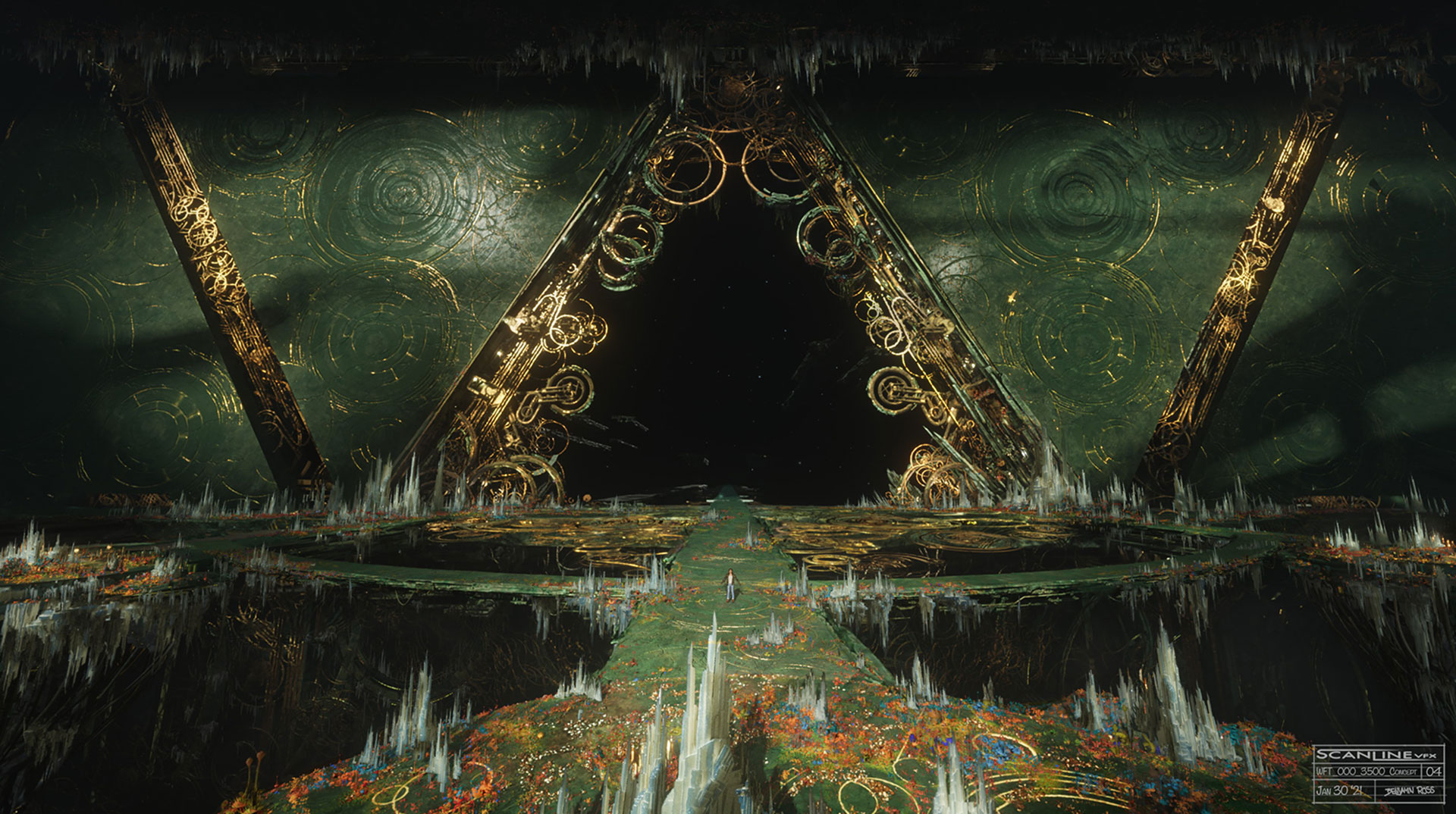
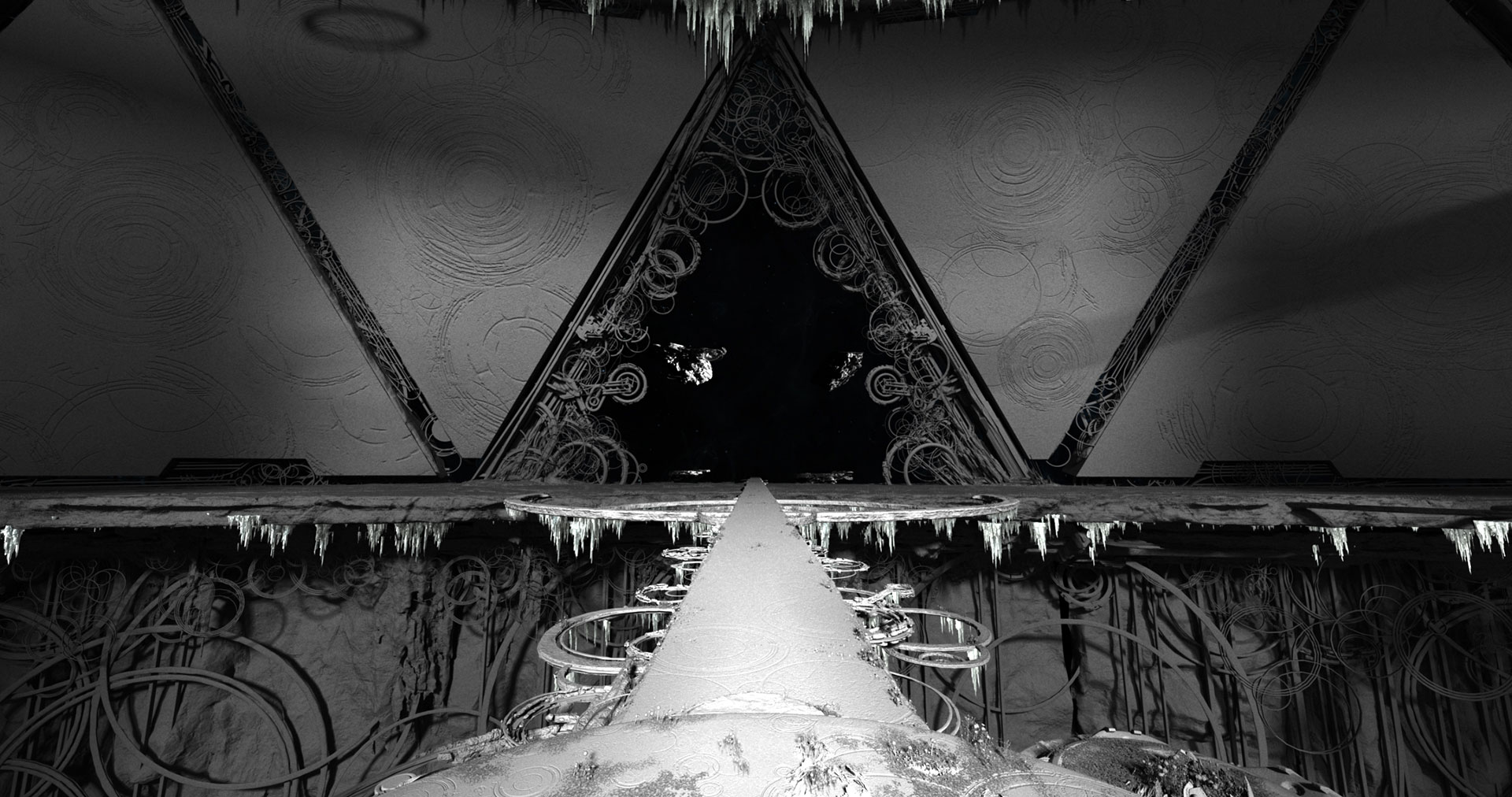
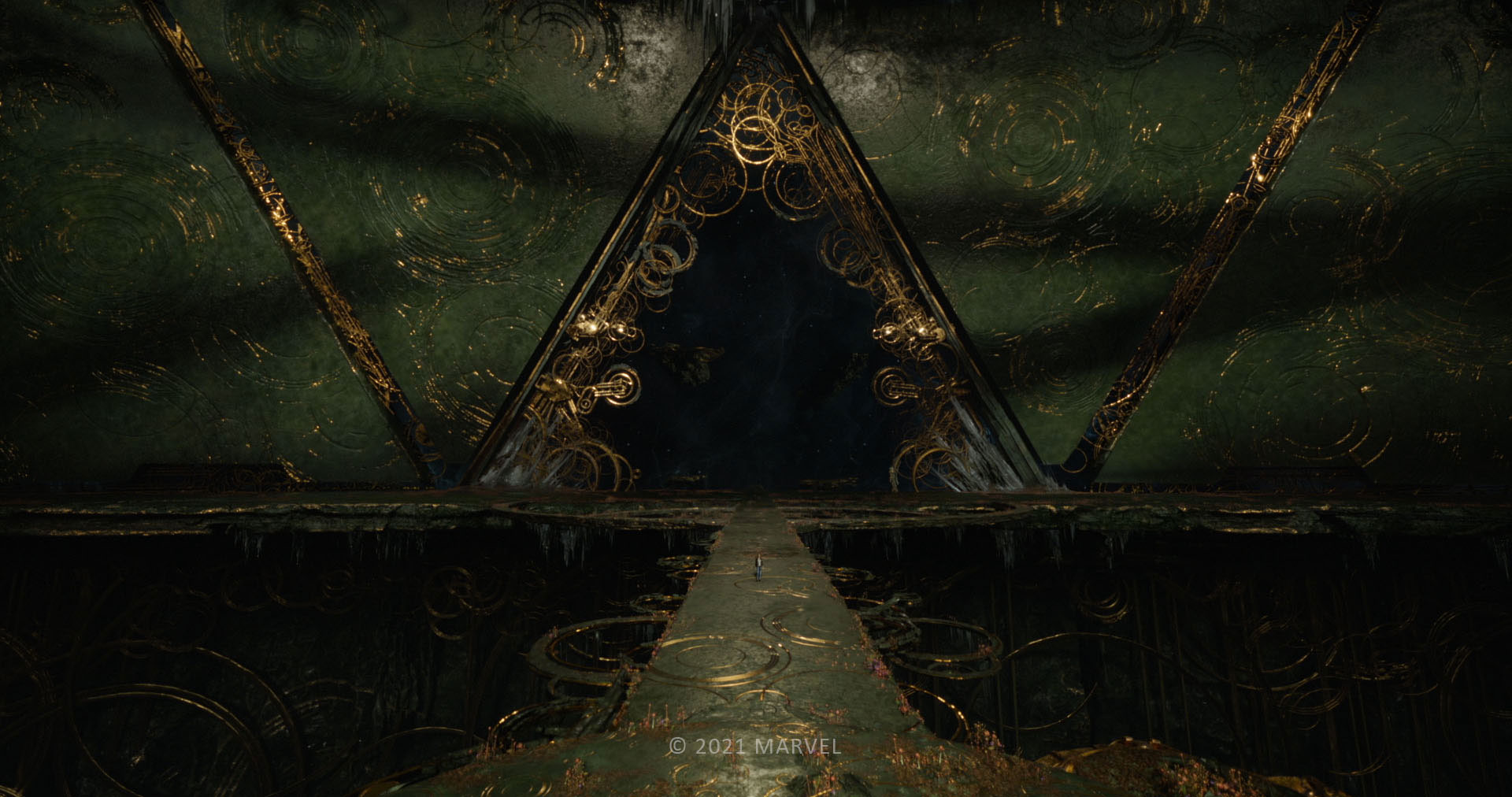
What kind of references and influences did you received for it?
Chloé had shown us a couple of specific Jack Kirby illustrations, which she felt had the right feeling for the mood and shape language of the world forge. Other than that, we developed it from scratch.
Did you procedural tools to help you?
Vray’s referencing and instancing tools helped with getting it all rendered. Populating the finished environment with alien plant life and crystal stalactites was done by procedural scattering through a forest pack, but for the vast majority, the environment was built by hand. Shout out to Modeling Lead Felix Wolf and CG Supervisor Andre Cabaco, who spearheaded the colossal build efforts on this.
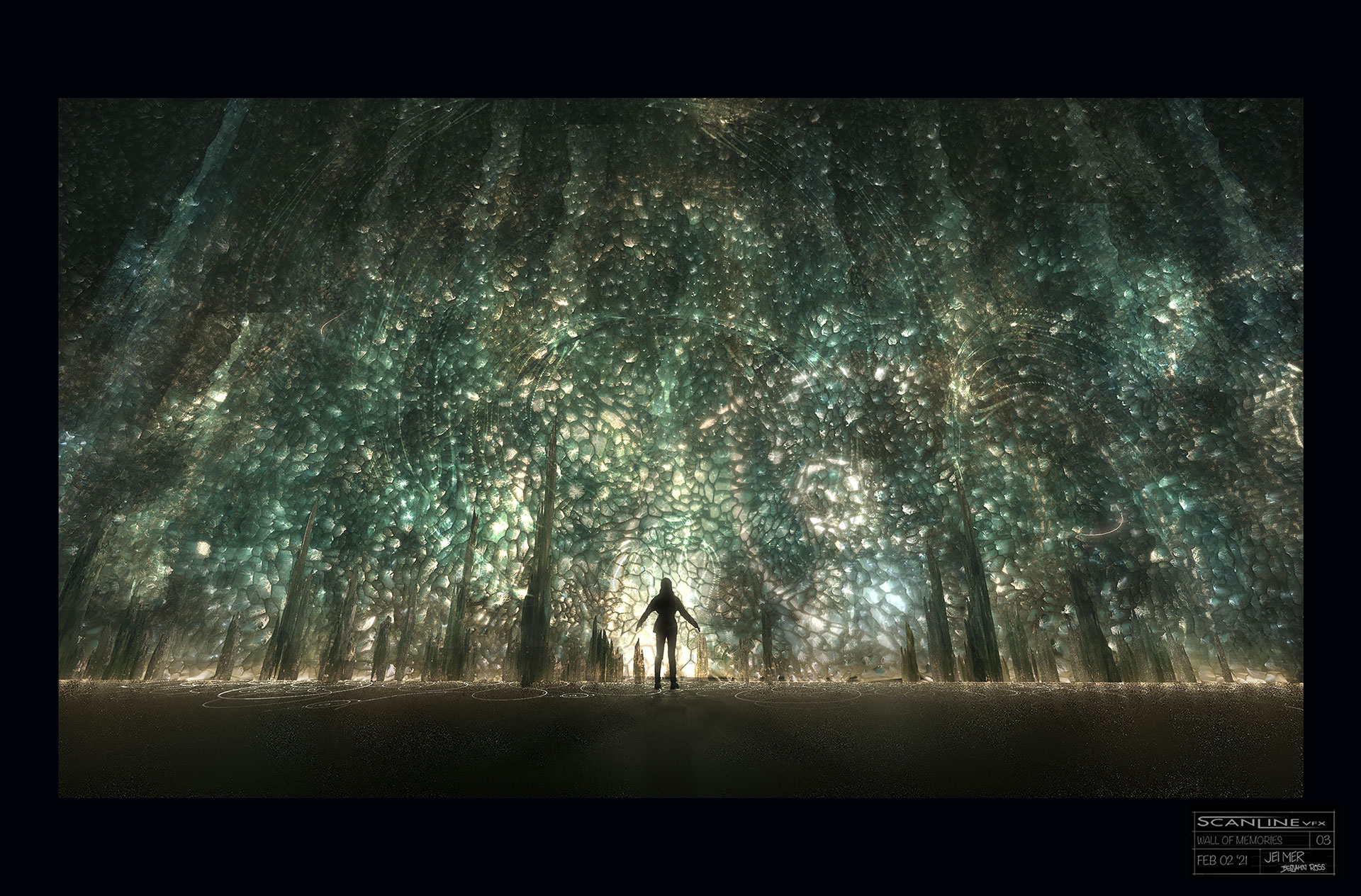
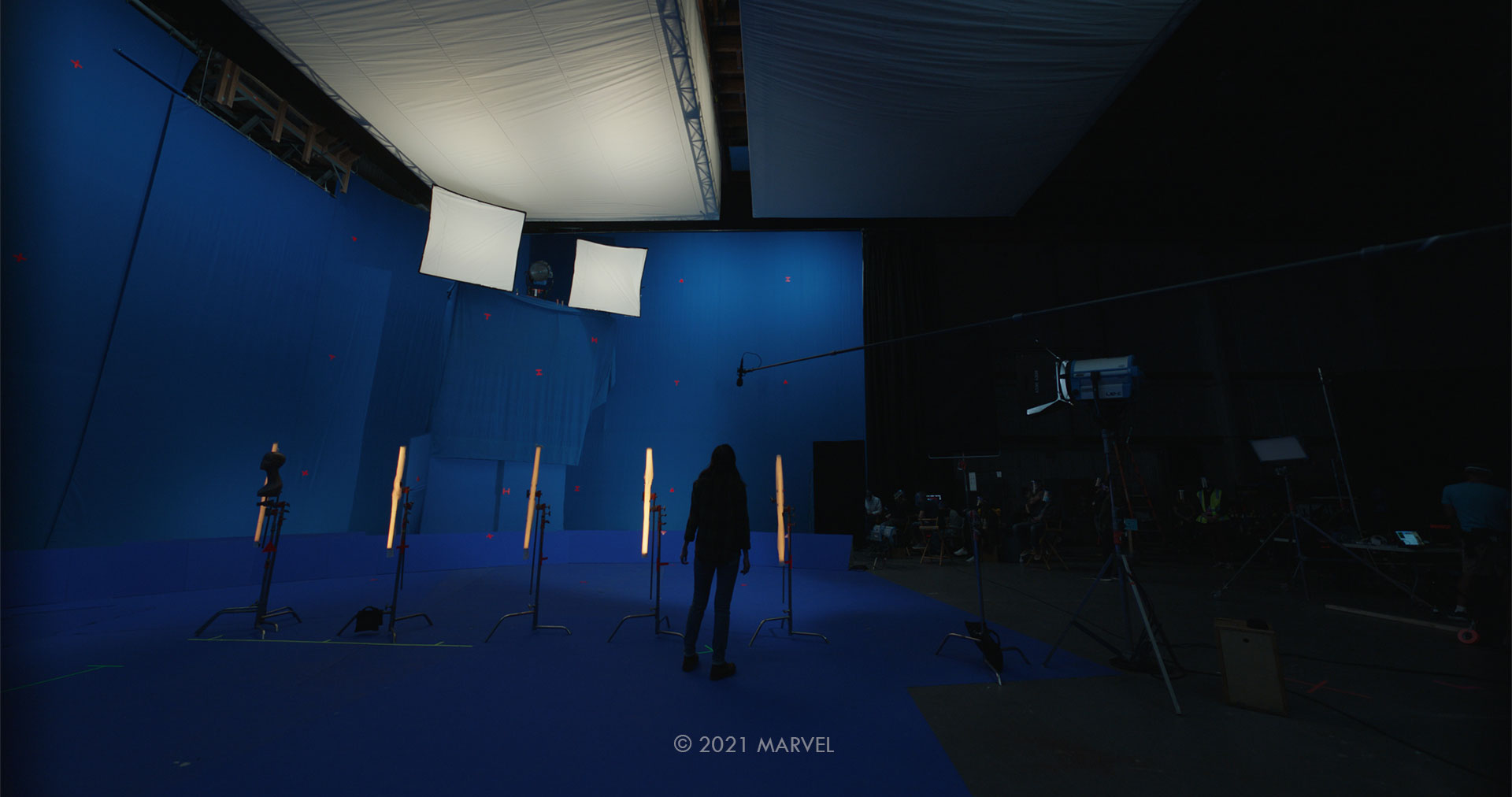
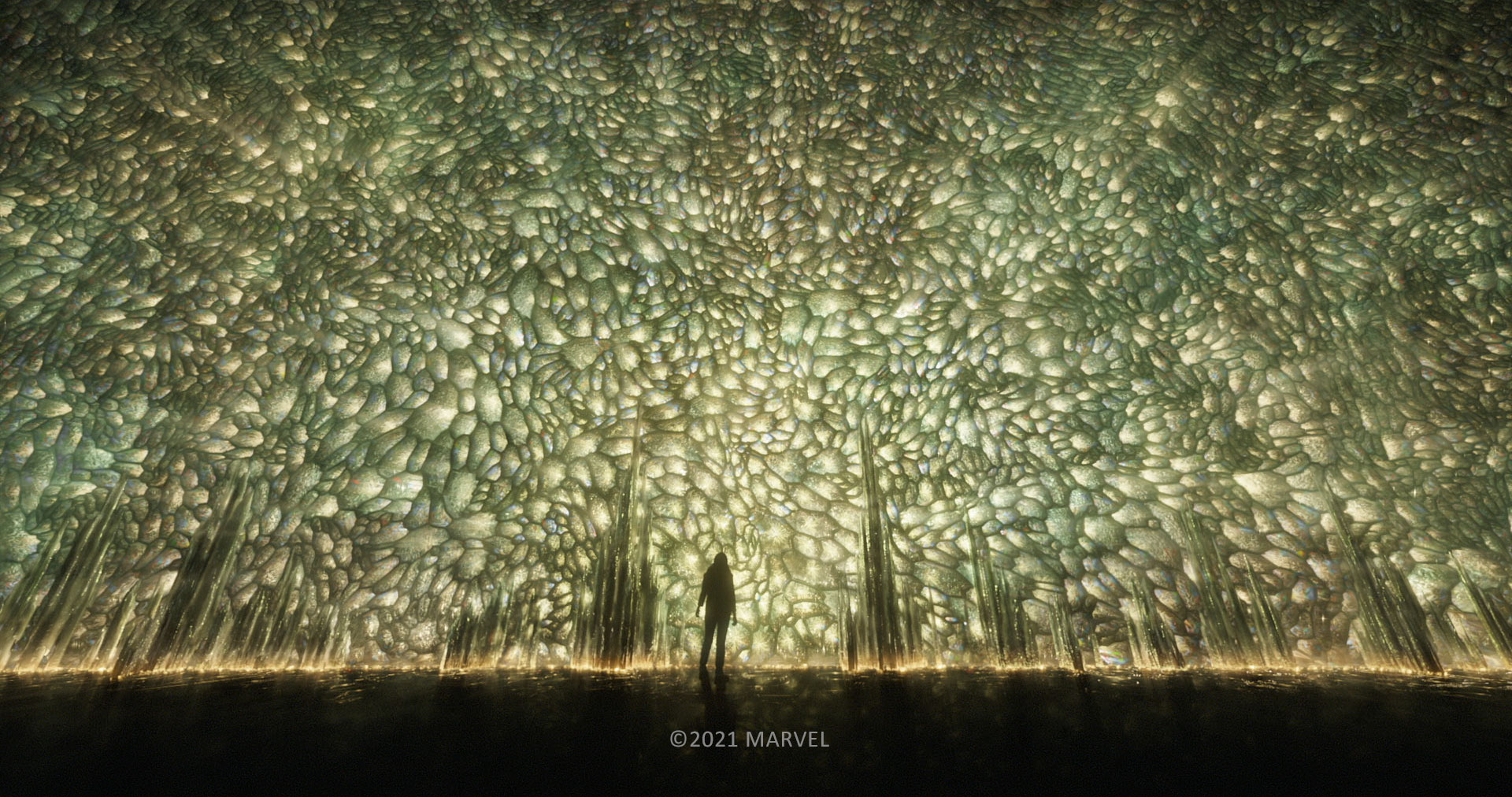
How did you handle so many FX elements?
Through a combination of patience and persistence mostly…. Although having access to a giant renderfarm helped as well. 😉
Can you tell us more about the Emergence and Tiamut work?
Besides Arishem, Scanline developed the look and models for all the other celestials in the film. Even though they are all built with an extensive amount of detail to hold up close, we only get a good look at three of them once, during the Big Bang sequence. Tiamut and Arishem are the two celestials that got a little more screen time but followed much of the same design principles we established for the other celestials. Our Tiamut asset was shared with Weta who dealt with most of the third act battle including the emergence where Sersi turns Tiamut into Marble. I am pretty sure that they ended up projecting additional fine detail onto the model for some of their close up shots to sell the enormous scale of the character. As did we for moments where we see a very specific area of Arishem, whether it be his face or part of his hand. These 2.5D projections can just help you get that extra bit of added realism to push things to the next level of believability.
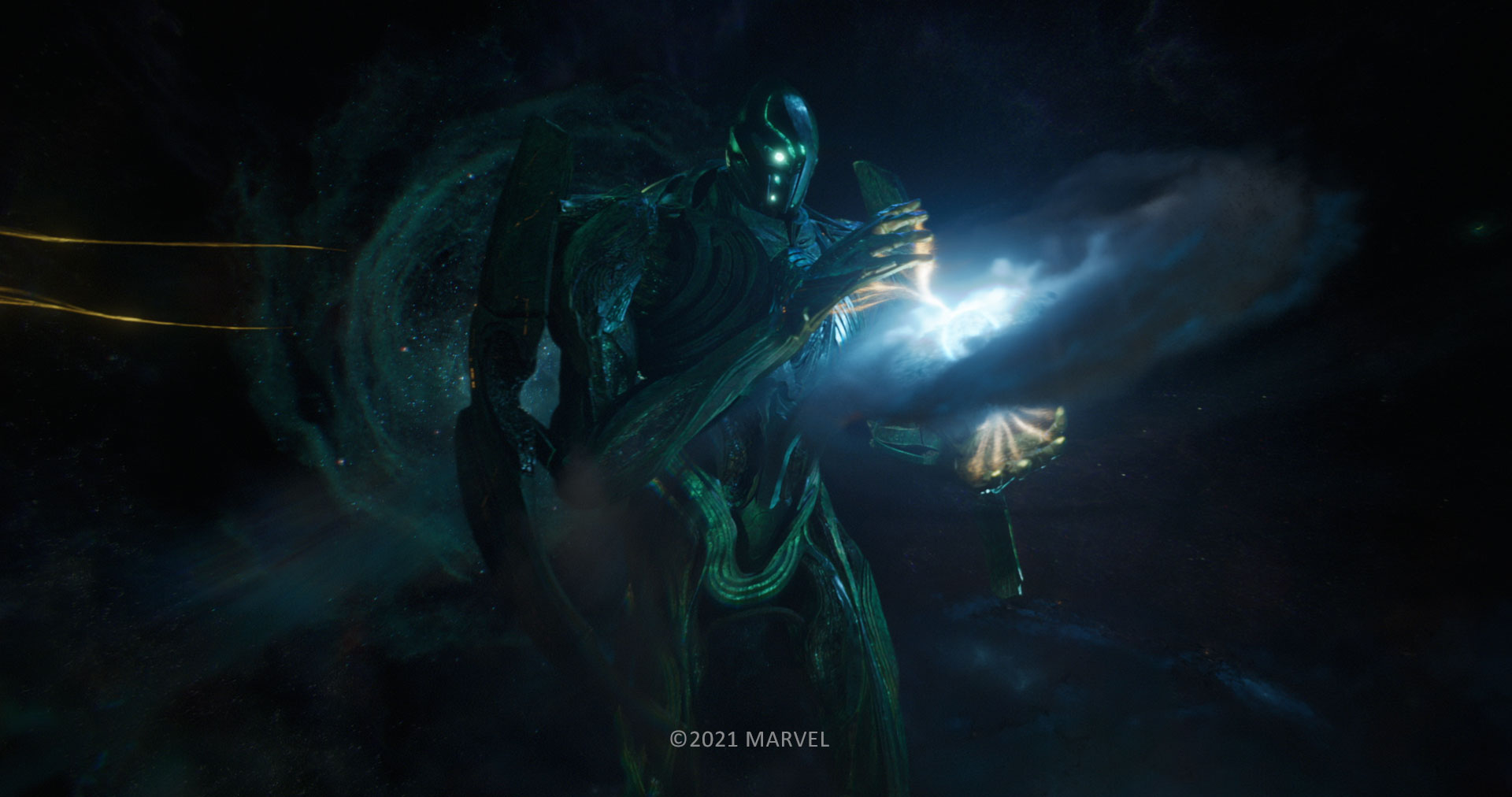
Which shot or sequence was the most challenging?
Good question… all our shots were so different. I feel that establishing the look and timing of our transitions between Sersi and Ajak in the real world and their meetings with Arishem was something particularly challenging though. Mostly because it involved finding a solution to elegantly transition between drastically different looking shots. That took a couple of experiments to get right.
Is there something specific that gives you some really short nights?
Losing the Indian Gupta sequence halfway through the post as well as seeing much of our initial ideas and development work on Centurii six end up on the cutting room floor were moments that were not conducive to a peaceful night’s sleep, but it is all part of the process. As painful as it is to see things go, it usually is for the betterment of the film as a whole and therefore okay. You move on.
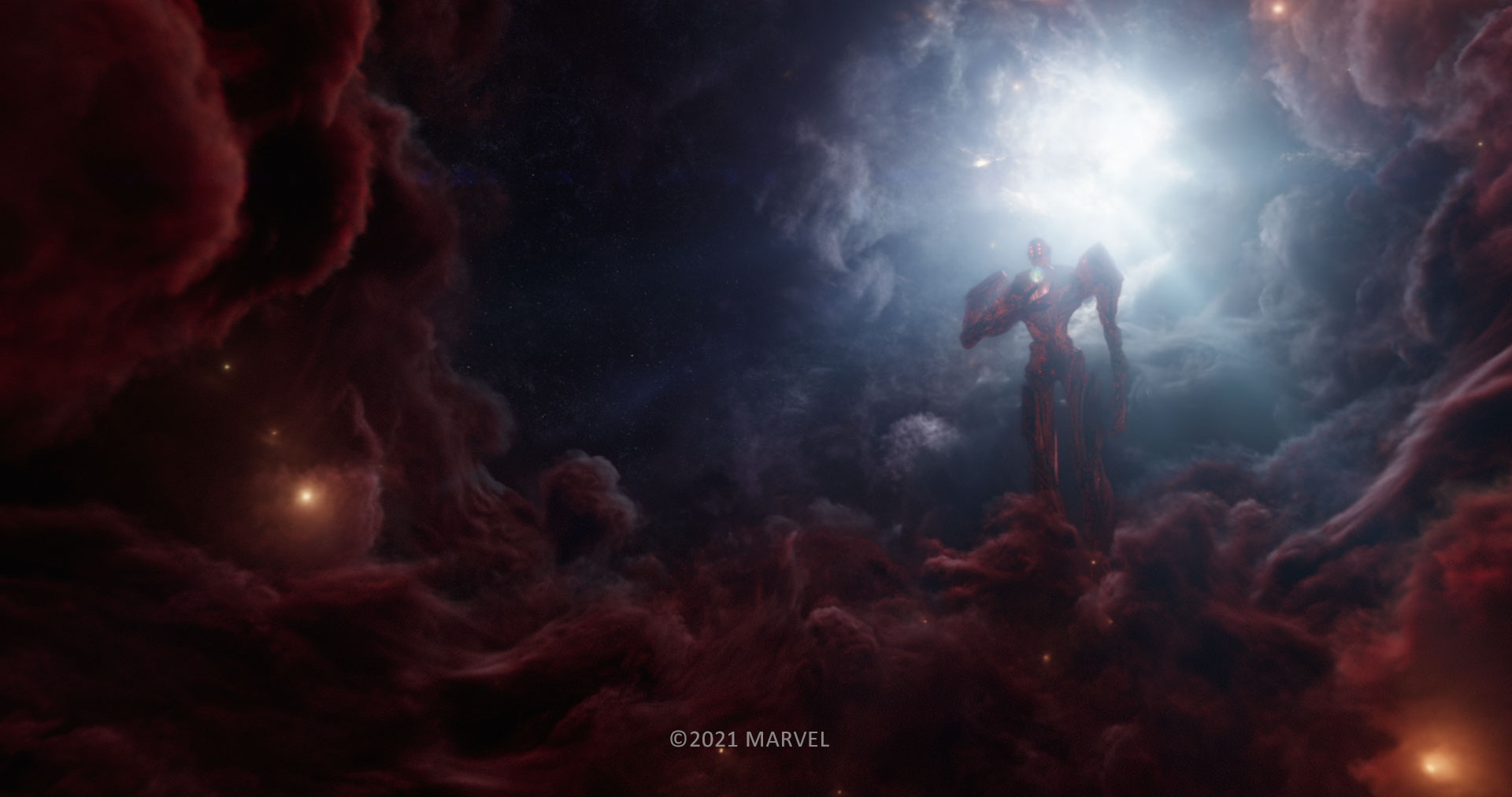
What is your favorite shot or sequence?
I’m proud of all the work we’ve done and the huge variety of truly unique shots we ended up delivering the visual effects for. But if I had to choose… The World Forge comes to mind as we developed that from start to finish in-house and I love how it turned out.
What is your best memory on this show?
Besides working with a great group of people, I would say that shooting background elements and texture references in India was an absolute treat. Sadly not much of that material can be seen in the final cut of the movie, but wow, what a trip!
How long have you worked on this show?
2 years, 3 months, 11 days.
What’s the VFX shots count?
We’ve had about 480 shots in production. I believe roughly half of them ended up in the film.
What was the size of your team?
Given the length of the project, I feel the majority of people within the company have worked on various bits and pieces of the film at some time. Not sure I can give you an exact number.
What is your next project?
I’m afraid my lips have to remain sealed on that one for the time being. Sorry!
A big thanks for your time.
WANT TO KNOW MORE?
Stephane Ceretti: Here is my interview of Production VFX Supervisor Stephane Ceretti.
© Vincent Frei – The Art of VFX – 2021






